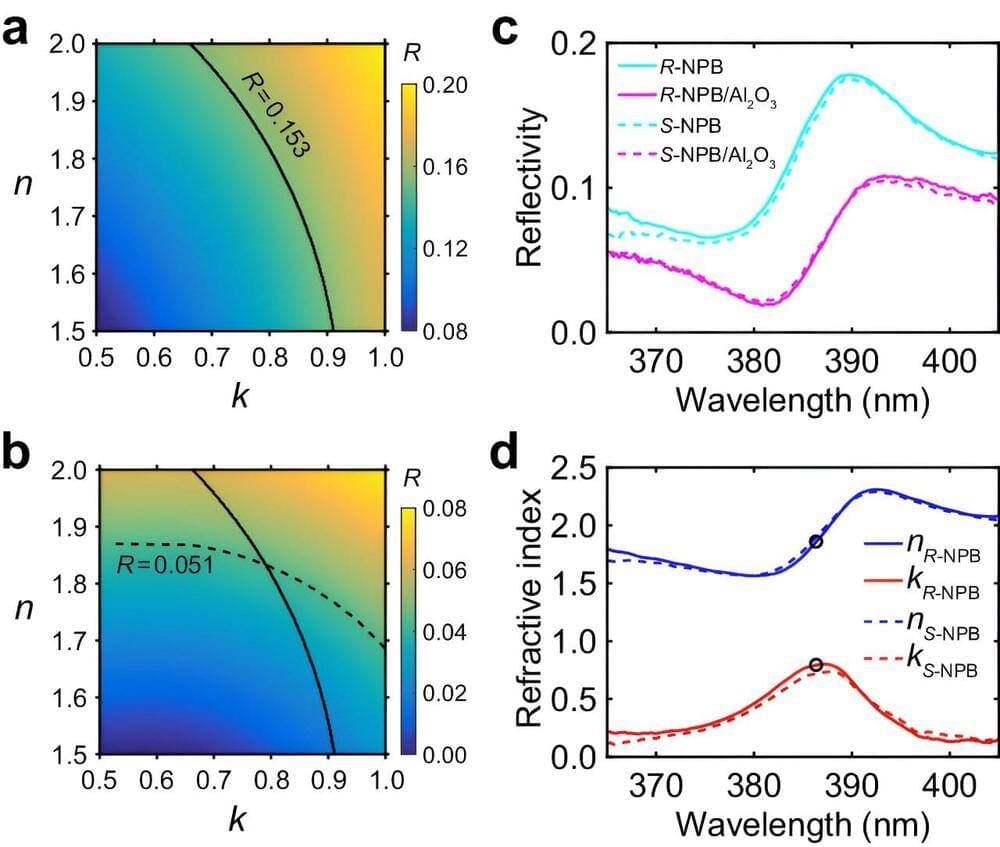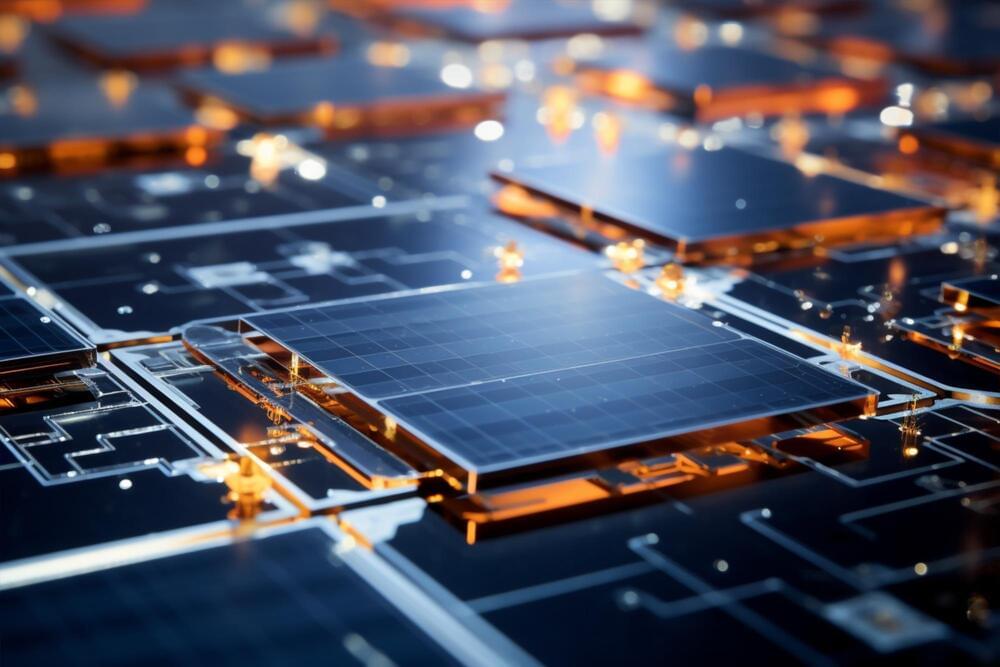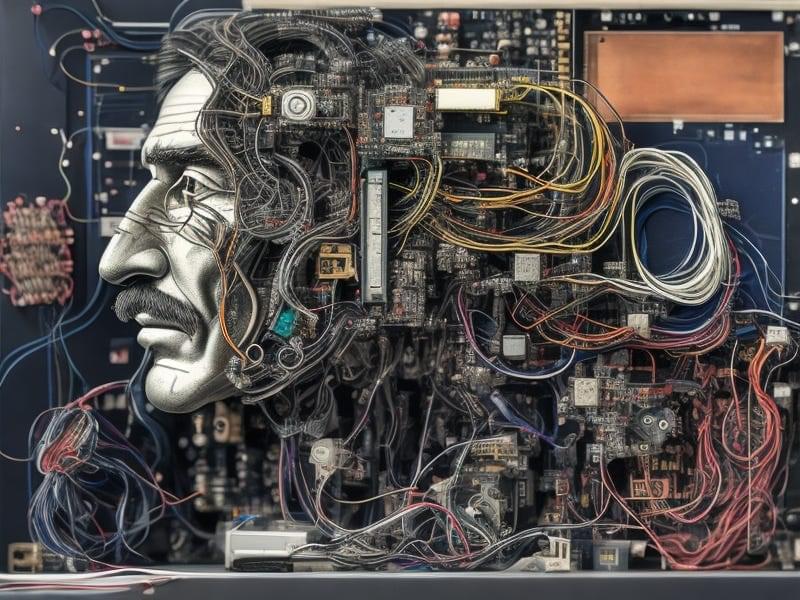Chiral molecules—that is, those that have mirror images of themselves—have significant benefits for transistors and solar energy devices. Studying their properties in close detail, though, has been tricky due to the limited methods for doing so.



A new study highlights the successful development of the first flexible perovskite/silicon tandem solar cell with a record efficiency of 22.8%, representing a major advance in flexible solar cell technology.
Although rigid perovskite/silicon tandem solar cells have seen impressive advancements, achieving efficiencies as high as 33.9%, the development of flexible versions of these cells has been limited. The main hurdle is improving light absorption in the ultrathin silicon bottom cells without compromising their mechanical flexibility.
In their pioneering study, a research team led by Dr. Xinlong Wang, Dr. Jingming Zheng, Dr. Zhiqin Ying, Prof. Xi Yang, and Prof. Jichun Ye from the Ningbo Institute of Materials Technology and Engineering, Chinese Academy of Sciences, has successfully demonstrated the first flexible perovskite/silicon tandem solar cell based on ultrathin silicon, with a thickness of approximately 30 µm. By reducing wafer thicknesses and adjusting the feature sizes of light-trapping textures, they significantly improved the flexibility of the silicon substrate without compromising light utilization. Additionally, by capping the perovskite top cells, they enhanced the mechanical durability of the device, thus addressing concerns related to fractures in the silicon surface.

Plus, Turing also showed that achieving universality doesn’t require anything fancy. The basic equipment of a universal machine is just not more advanced than a kid’s abacus — operations like incrementing, decrementing, and conditional jumping are all it takes to create software of any complexity: be it a calculator, Minecraft, or an AI chatbot.
Likewise, consciousness might just be an emergent property of the software running AGI, much like how the hardware of a universal machine gives rise to its capabilities. Personally, I don’t buy into the idea of something sitting on top of the physical human brain — no immortal soul or astral “I” floating around in higher dimensions. It’s all just flesh and bone. Think of it like an anthill: this incredibly complex system doesn’t need some divine spirit to explain its organized society, impressive architecture, or mushroom farms. The anthill’s intricate behaviour, often referred to as a superorganism, emerges from the interactions of its individual ants without needing to be reduced to them. Similarly, a single ant wandering around in a terrarium won’t tell you much about the anthill as a whole. Brain neurons are like those ants — pretty dumb on their own, but get around 86 billion of them together, and suddenly you’ve got “I” with all its experiences, dreams, and… consciousness.
So basically, if something can think, it can also think about itself. That means consciousness is a natural part of thinking — it just comes with the territory. And if you think about it, this also means you can’t really have thinking without consciousness, which brings us back to the whole Skynet thing.
face_with_colon_three year 2021.
The solar aircraft is made by a Spanish-American aerospace startup called Skydweller Aero. Based in Oklahoma City, the company raised $32 million in its Series A funding round, led by Italian aerospace firm Leonardo.
“For us, if you’re flying 90 days with one aircraft, that’s two takeoffs and landings versus … hundreds,” Skydweller Aero co-founder John Parkes told Aviation Today. “Being able to fly thousands of miles, persist over an area for 30–60 days and fly back is a differentiator. It’s a huge cost savings to the US government when you look at the whole cost of doing a lot of the national security missions that we have.”
The plane will stay airborne thanks to 2,900 square feet of photovoltaic cells that will blanket its surface, generating up to 2 kilowatts of electricity. As a backup in case it’s cloudy for a few days in a row, the plane will also be equipped with hydrogen fuel cells (maybe they’re not as “extremely silly” as Elon Musk thinks).

Earth’s H2O is 97 percent seawater, and most of the remaining 3 percent is inaccessible, frozen in glaciers or permafrost. Only a small portion, about half of a percent, exists as freshwater in aquifers and rivers that humans can tap into. A process called, however, allows us to dip into the oceans to satisfy our thirst.
Desal has been around for decades and is used to make both seawater and salty groundwater drinkable. But scientists think that it will become increasingly important in a warmer, drier future. In a recent UN-led review, researchers stated that “‘conventional’ sources of water such as rainfall, snowmelt and river runoff captured in lakes, rivers, and aquifers are no longer sufficient to meet human demands in water-scarce areas.”
During a media roundtable at the 2019 American Geophysical Union conference, Peter Fiske, director of the Water-Energy Resilience Research Institute at Lawrence Berkeley National Laboratory, discussed why we might need to more strongly consider this technology—at times written off for its high costs and energy use—to stabilize water supplies in the future. Here’s what you need to know.
Discussion with Jeff Krehmer about his book Infinite Resources: How to sustainably develop the arctic, by supplying green hydrogen, fresh water and healthy food to the world, while mitigating the negative effects of anthropocentric climate change.
Links related to Infinite Resources:
The book Infinite Resources:
https://www.amazon.com/Infinite-Resou?tag=lifeboatfound-20…
Moon-shots program incubator:
https://foresightcac.com/earthtech205…
Engage Jeff Krehmer:
www.linkedin.com/in/jeff-krehmer/
Links:
Quora blog: https://spacefaringcivilization.quora…
Amazon Author page: http://amazon.com/author/ronfriedman.
My Website: https://ronsfriedman.wordpress.com/
How to support the channel:

The only problem with plastic profusion is that “recycling” it is at a “caveman’s” level!
In considering materials that could become the fabrics of the future, scientists have largely dismissed one widely available option: polyethylene.
The stuff of plastic wrap and grocery bags, polyethylene is thin and lightweight, and could keep you cooler than most textiles because it lets heat through rather than trapping it in. But polyethylene would also lock in water and sweat, as it’s unable to draw away and evaporate moisture. This antiwicking property has been a major deterrent to polyethylene’s adoption as a wearable textile.
Now, MIT engineers have spun polyethylene into fibers and yarns designed to wick away moisture. They wove the yarns into silky, lightweight fabrics that absorb and evaporate water more quickly than common textiles such as cotton, nylon, and polyester.
A clean energy startup develops a record-breaking residential solar module that records an efficiency figure of 26.9 percent.
Battery technology is undergoing a rapid evolution. Recent years have seen significant improvements in both range and charging speed for EVs. BYD and CATL’s upcoming batteries are the latest example, aiming to revolutionize charging times. These companies are reportedly set to debut their ultra-fast-charging LFP batteries by the end of this year, potentially eliminating the need for lengthy charging stops during road trips.
The key to these rapid charge times lies in the 6C charging rate boasted by both the BYD Blade 2.0 and CATL Qilin 2.0 battery packs. In simpler terms, the “6” signifies that the charging multiplier is six times the battery capacity. For instance, a 100-amp-hour battery could be charged with a massive 600-amp current.
However, there are hurdles to overcome. Upgrading the charging infrastructure is crucial to support these speeds. Without an update to the charging network, owners of these advanced batteries won’t be able to fully benefit from their technology and will be limited by slower charging options. It’s also important to remember that batteries can’t maintain peak charging speeds throughout the entire charging cycle. Expect some strategic marketing around these new batteries, with a focus on specific charging windows, like 10% to 80% in 10 minutes. The 2024 Zeekr 1 with its 5C-rated battery is a prime example, achieving an 11.5-minute charge time for this range.
Bioenergy Innovation For The U.S. Bioeconomy — Dr. Valerie Sarisky-Reed Ph.D. — Director, Bioenergy Technologies Office, Office of Energy Efficiency and Renewable Energy, U.S. Department of Energy (DOE)